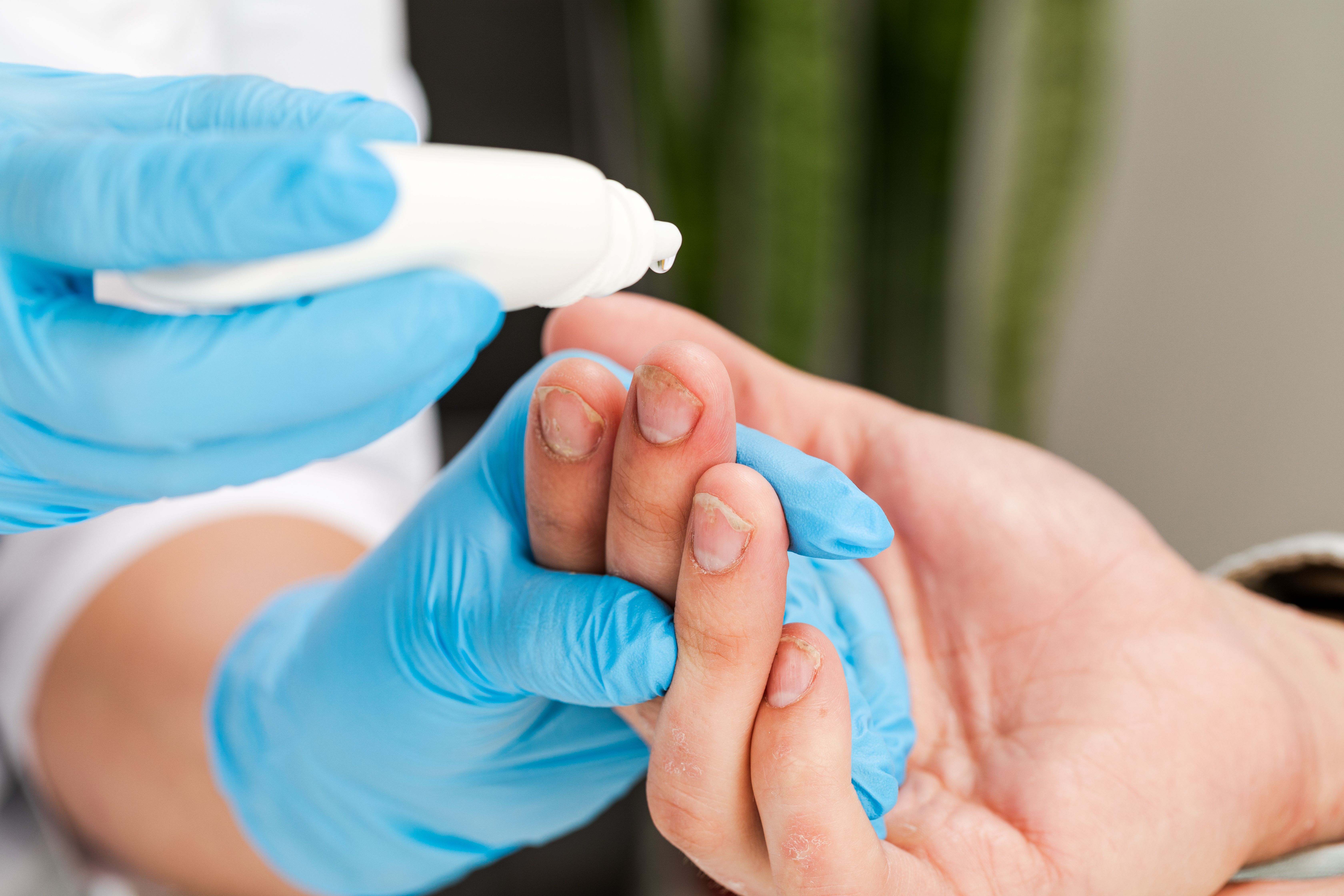- Center on Health Equity & Access
- Clinical
- Health Care Cost
- Health Care Delivery
- Insurance
- Policy
- Technology
- Value-Based Care
Tildrakizumab Effectively Enhances Quality of Life in Moderate to Severe Psoriasis
Study highlights the efficacy and safety of tildrakizumab in improving physical, psychological, and social aspects of quality of life for patients with psoriasis.
A 28-week study evaluated the real-world effectiveness of tildrakizumab, an anti–IL-23 biologic approved for patients with moderate to severe psoriasis.1 The study revealed substantial improvements in clinical outcomes and quality of life metrics, with 97.1% of patients achieving Psoriasis Area Severity Index 75 (PASI75) and 82.9% reporting minimal impairment by week 28. These findings underscore tildrakizumab's role as a safe and effective treatment option, delivering measurable benefits within 16 weeks of therapy.

The multicenter, real-life, retrospective study is published in the Journal of Clinical Medicine.
“Being able to reduce the inflammatory response, not merely in the skin but also the systemic inflammation reported in the disease, is associated with an improvement in both objectively examinable symptoms (i.e., skin manifestations and articular symptoms) and the impairment that psoriasis leads on several aspects of patients’ life,” wrote the researchers of the study.
Previously, tildrakizumab demonstrated a high degree of effectiveness and a good safety profile in a real-world setting over 52 weeks, with patients with scalp and nail involvement or pruritus showing noticeable improvements.2 Similarly, posters presented at the 2023 Fall Clinical Dermatology Conference found treatment with tildrakizumab significantly improved worked productivity with significant efficacy and a favorable safety profile among individuals with moderate to severe plaque psoriasis.3
In this study, the researchers aimed to evaluate the effectiveness of tildrakizumab, focusing on the impacts of this treatment on all domains of a patient’s quality of life due to the burden of psoriasis.1
The study was conducted across 19 Italian psoriasis centers. Participants had a confirmed diagnosis of moderate to severe plaque psoriasis for at least 6 months, were prescribed tildrakizumab, and had no contraindications to its use. Baseline data collected included demographics, disease duration, psoriatic arthritis presence, involvement of difficult-to-treat areas, comorbidities, prior treatments, and assessments of psoriasis severity and quality of life using PASI and Dermatology Life Quality Index (DLQI), respectively. To focus on patients most impacted by psoriasis, only those with a baseline DLQI of 10 or greater were included, with a higher score indicating a greater impact on quality of life.
Follow-up evaluations at weeks 16 and 28 assessed clinical improvements using PASI and DLQI scores. A detailed sub-analysis of DLQI questions provided insights into physical, psychological, and social quality-of-life domains. Clinical ineffectiveness was defined as a failure to achieve PASI75 by week 28, with secondary ineffectiveness indicating a loss of response after an initial improvement.
A total of 81 participants were screened and ultimately 62 were enrolled. Tildrakizumab was scheduled at doses of 100 mg or 200 mg in 47 (75.8%) and 15 (24.2%) patients, respectively, without dosing adjustment.
Of the enrolled patients, 55 (88.7%) reached the week 16 follow-up, and 35 (56.5%) completed the week 28 evaluation. Significant improvements in PASI were observed at both week 16 (3.0 ± 3.9; P < .0001) and week 28 (1.2 ± 2.2; P < .0001) compared with baseline. By week 16, 74.5% of patients achieved PASI75, increasing to 97.1% by week 28. Additionally, 50.9% and 34.5% of week 16 patients achieved PASI90 and PASI100, respectively. By week 28, these proportions rose to 85.7% and 54.3%.
DLQI showed a substantial reduction from baseline (20.3 ± 5.5) to weeks 16 (3.1 ± 3.8; P < .0001) and 28 (0.9 ± 2.2; P < .0001). Notably, 43.6% of patients achieved a DLQI less than 1 by week 16, with this figure increasing to 82.9% by week 28.
“Our results showed tildrakizumab to be a promising treatment to improve the impact that psoriasis has on patients’ quality of life,” wrote the researchers. “In line with the literature, tildrakizumab resulted in a safe and effective treatment for the management of moderate to severe psoriasis. Our data, in line with the literature, show that the impact of psoriasis on daily patients’ life should not be underestimated, needing continuous follow-up as with other diseases linked to psoriasis.”
References
1. Licata G, Brizzi D, Castelli EV, et al. Tildrakizumab and quality of life: Deep dive into the impact of psoriasis and treatment on different domains—Should psychosocial life impairment be considered a comorbidity? J. Clin. Med. 2025, 14, 223. https://doi.org/10.3390/jcm14010223
2. Tsianakas A, Schwichtenberg U, Pierchalla P, et al. Real‐world effectiveness and safety of tildrakizumab in long‐term treatment of plaque psoriasis: Results from the non‐interventional, prospective, multicentre study TILOT. J Eur Acad Dermatol Venereol. 2023;37(1):85-92. doi:10.1111/jdv.18572
3. Steinzor P. Evaluating work productivity, efficacy and safety of tildrakizumab in patients with plaque psoriasis. AJMC. November 13, 2024. Accessed January 15, 2025. https://www.ajmc.com/view/evaluating-work-productivity-efficacy-and-safety-of-tildrakizumab-in-patients-with-plaque-psoriasis.
The Breakdown: Breast Cancer Research Awareness Day
August 19th 2025Breast cancer is the second most common cancer among women and the second leading cause of cancer-related deaths among women in the US. In light of Breast Cancer Research Awareness Day, The American Journal of Managed Care® breaks down the most recent advancements in breast cancer prevention, screening, and therapies.
Listen
Psoriasis as an Inflammatory Disease, and What’s Changed Over Time
August 3rd 2021August is National Psoriasis Awareness Month, and on this episode of Managed Care Cast, we bring you an excerpt of an interview with a New Jersey dermatologist about the changing concept of psoriasis as more than just a skin disease.
Listen
